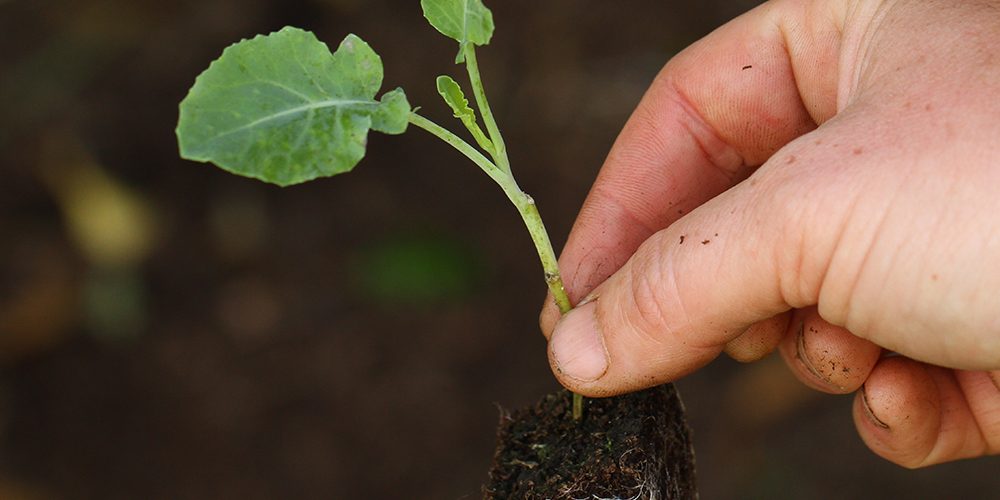Summer is a great time to get your sprouts in the ground for a Christmas crop, or plant cauliflowers and cabbages to grow for a winter harvest, or swede and turnips for late autumn. You can also plant up kale in summer, and you’ll be able to start harvesting in late summer/early autumn and with luck the plants will carry on through the colder months too. It’s a really good time for planting any brassicas really, and a great way of extending the growing season for those that have decided they won’t be planting winter crops in Sept/Oct.
With the soil already quite dry, temperatures warm and cabbage white butterflies flitting around the garden, it is worth following these top tips if you’re planting out brassicas at this time of year:
Water in well and firm plants down
A good technique is to dig the holes for all the brassica plug plants, us a watering can to puddle them, and then go back along the rows popping the plants in place and covering back up with soil. Use the heel of your foot to firm them in really well so that the soil is nice and compact around the base of the plants – this will really help their root structure over the next few months, and you’ll be much more likely to get well formed cabbages and cauliflowers, and less likely to get sprouts that topple over on windy autumn days.
Add a mulch
Mulching around the base of brassica plants and in between rows will really help to keep the soil temperatures and moisture levels a little more consistent. It’s easy to do – you can use a bag of multipurpose compost after planting and just spread a layer of it around the plants.
Protect from pigeons and butterflies with mesh netting as soon as you plant them
Don’t leave it until the next day to cover brassicas – pigeons are so quick to spot new, young brassicas at this time of year and will easily strip the whole bed bare early in the morning. And cabbage white butterflies lay a lot of eggs during the summer, too, and any eggs laid on baby plants will soon hatch into caterpillars that will quickly demolish them. It’s so easy to protect them by simply laying horticultural fleece or mesh netting lightly over the top of plants. Secure at the sides and edges with stones and your brassicas will be well protected. Over time, you can prop the netting up if needed, either using bamboo canes topped with jam jars, or by building a hoop tunnel. But a straightforward cover as described will see the plants through for several weeks, especially if there is enough leeway for the plants to push the netting up as they grow.

